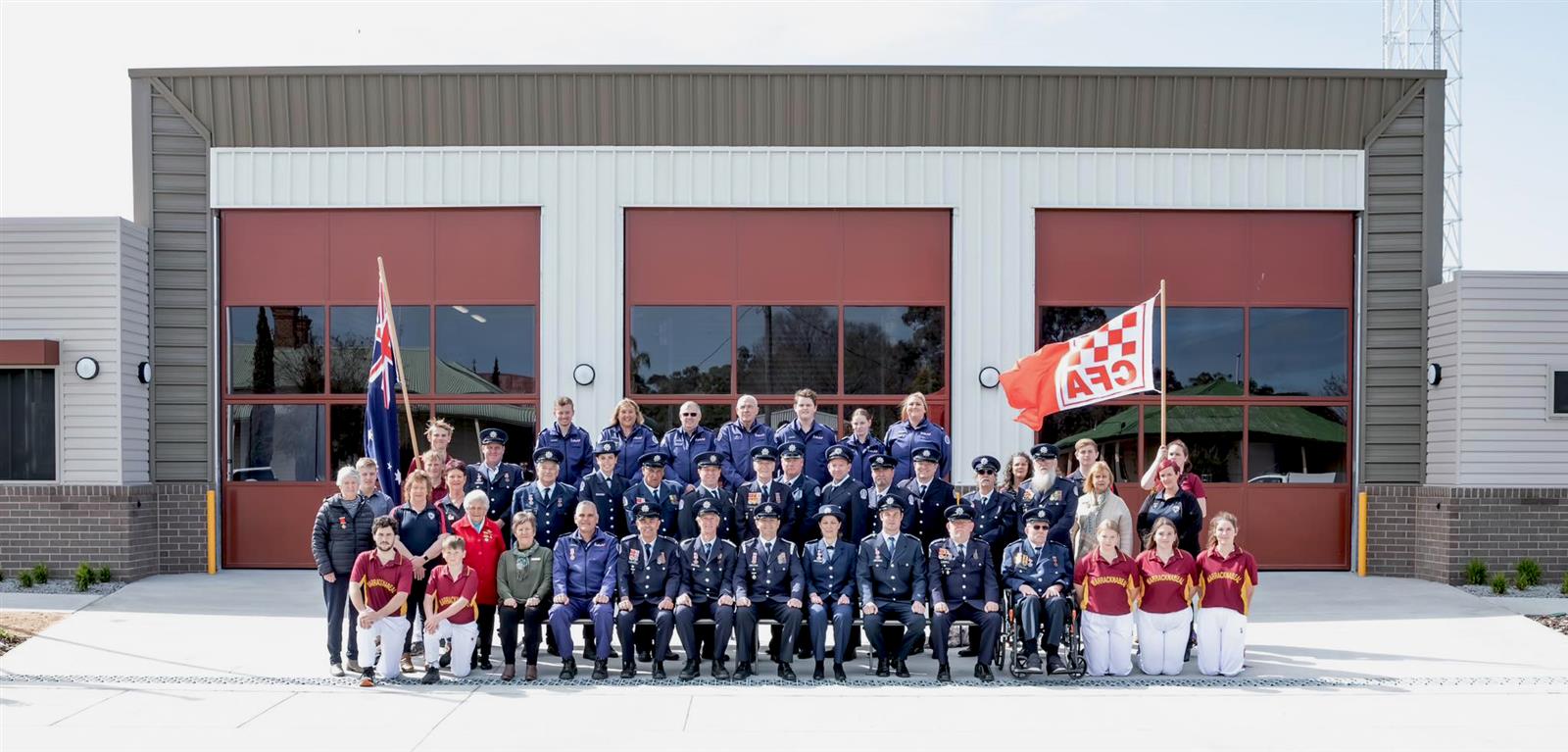
Warracknabeal Fire Brigade may be one of Victoria’s oldest fire brigades – but its members have always had a focus on innovation and progression.
Located in the state’s north-west, Warracknabeal brigade has a history dating back to CFA’s formative years. The brigade began in the 1890s when local volunteers secured a 26-person Merryweather hand-operated manual pump enabling them to officially join the newly created Country Fire Brigades Board (now CFA).
By 1919, the Country Fire Brigades Board (CFBB) had seen the potential of motorised firefighting vehicles which were considered a great advance on horse-drawn vehicles. Following the war, there were also huge developments in the design and use of motorised water pumps, which made firefighting more efficient and effective.
Warracknabeal’s then captain, local entrepreneur Tom Gardiner seized upon this opportunity, establishing Gardiner-Aussie Workshops in the early 1920s with the goal of building trucks and pumpers suitable for rural firefighting. His innovative design would prove successful and was quickly adopted by the CFBB. Tom’s workshop was commissioned to develop 55 pumpers prior to his death in 1935.
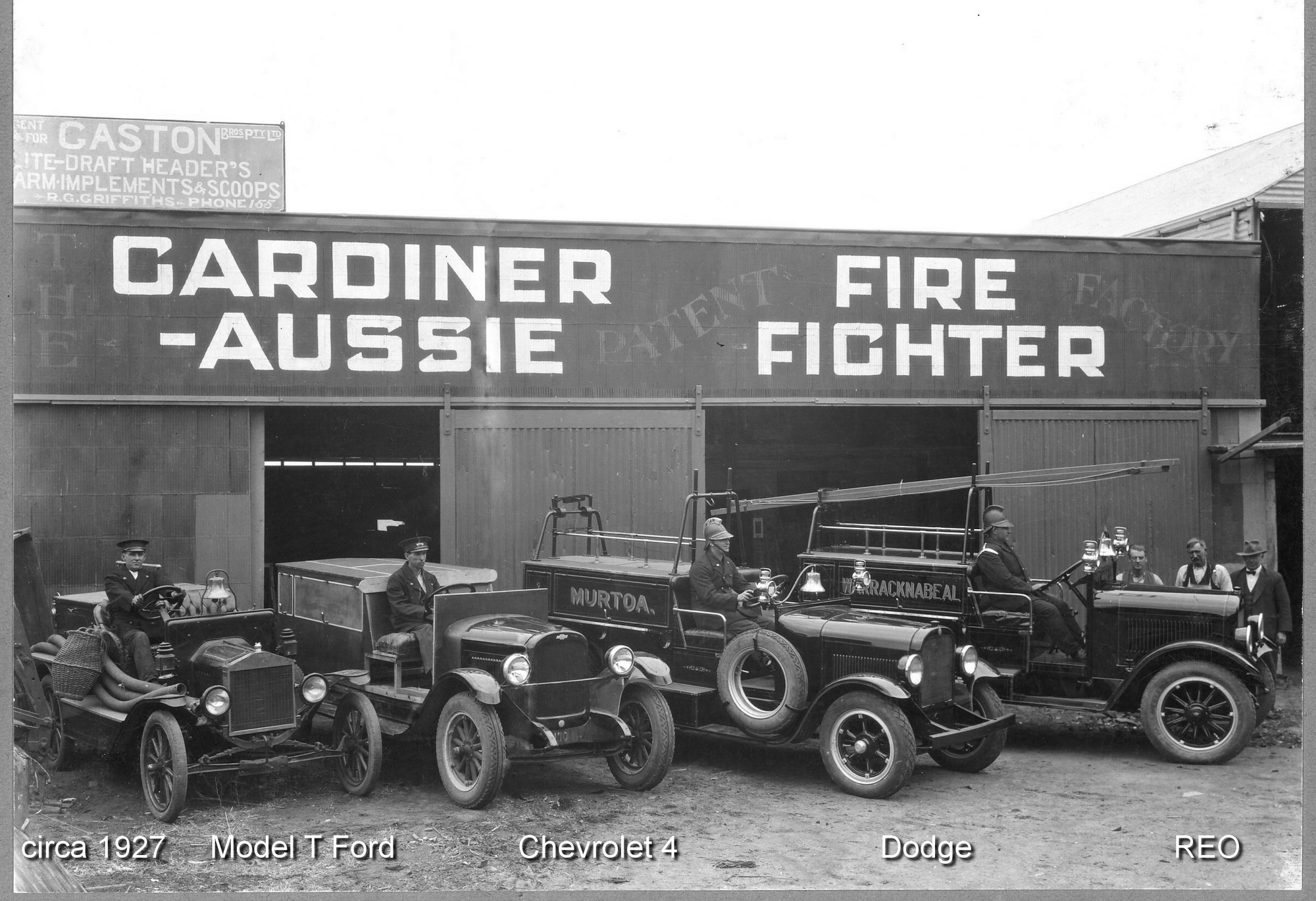
The new pumpers would not be the first motorised vehicle produced out of Warracknabeal. A belt drive bike with a small four stroke engine and pedal assist was built by the Mallee Cycle works in 1905.
Another of the brigade’s early leaders has strong ties to CFA’s history and was instrumental in improving CFA’s early communication with members. In 1947 Captain Norman Tosh recognised the need for a regular publication to share information with brigades across the state. With approval from CFA, he became the founder and first editor of ‘The Fireman’ (now Firewise), a newspaper for volunteer firefighters which is still in circulation today.
Warracknabeal Fire Brigade has grown significantly in the years since, and members are firmly focused on the future.
Current brigade captain Cameron Whelan says, like its early years, Warracknabeal brigade continues to have a progressive and innovative lens focused on improvement.
The brigade’s new, state-of-the-art station opened in mid-2023 replacing the 35-year-old station. The station features improved facilities such as drive through engine bays, a laundry, changerooms and other amenities. The brigade was able to provide a significant contribution to improve the size of the meeting room, rear shed, install bi-fold doors as well as make other improvements.
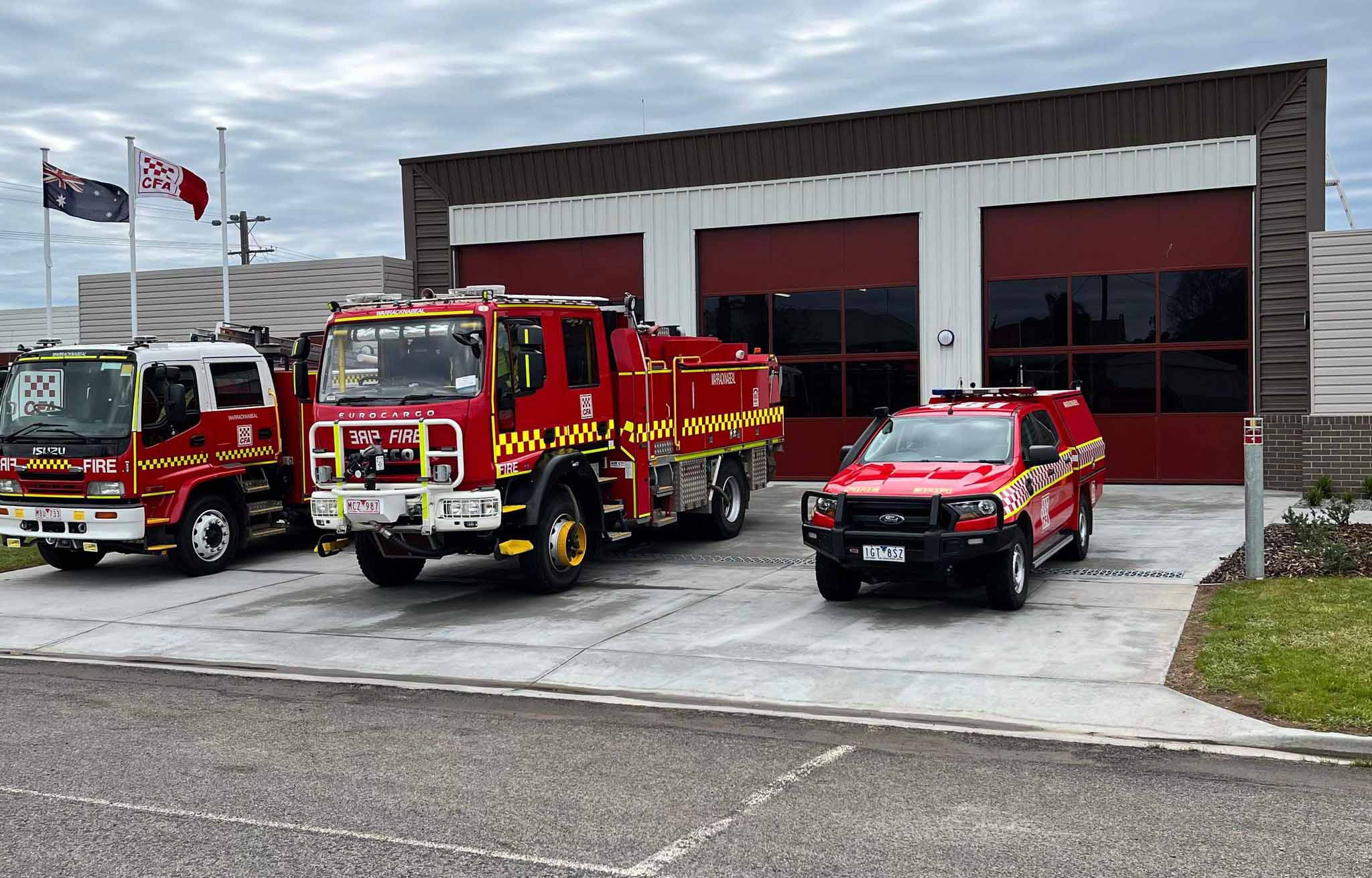
“We’ve always been a vibrant and progressive brigade, so the modern design of the new station represents us well,” Cameron said.
“We’ve built this station for the next 30 years so the vision is not only to support the needs of Warracknabeal today; we’re also looking beyond that to what will be required in the future.
"Our Fire Equipment Maintenance servicing is key to the brigade continuing to improve facilities and operational equipment.
"The brigade also has an active social Auxiliary membership primarily supporting the brigade through fundraising programs and assisting local community groups such as the Scouts and Guides."
The brigade has about 70 members and attends about 40 incidents a year locally; members also provide support across the state during the fire season.
With one of the key industries in Warracknabeal and surrounds being broadacre cereal farming, harvesting-related fires are one of the main risks the brigade encounters over the fire danger period. Its members have been heavily involved in the development of the joint CFA and Victorian Farmers Federation Grain Harvesting Guidelines.
“The main incidents we turn out to are running grass and scrub fires through to harvesting machinery fires,” Cameron said.
“Like many other towns we also have a range of other risks from hospital/aged care, large chemical storage facilities through to household or structural fires.”
The brigade has a very stable membership and whilst they will always welcome new members, Cameron says they are lucky they don’t need to actively seek members.
“Like many rural brigades, we can see a drop off when members reach 18-19 years old because they leave for university or work,” Cameron said.
"A strong Juniors program aims to encourage skill development and succession from the junior to senior ranks.
“To encourage retention, we include fire ground practise as part of our Junior training to build their skills and eagerness.”
Cameron said volunteering with CFA is for anyone who is willing to help their community, better themselves and join a bigger family.
“The thing I’m most proud of in leading our brigade is the values our members display,” Cameron said.
“Values such as care, respect and integrity are common attributes amongst our cohort.”
This story is part of our profile series Brigades of CFA which highlights our brigades and the great work they do in their communities.
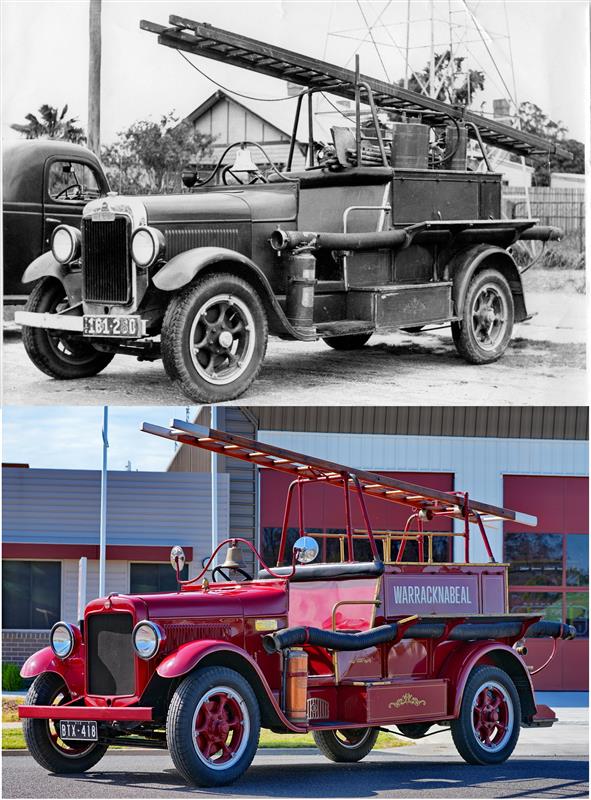 Then and now: a restored 1928 Dodge DA Gardiner pumper
Then and now: a restored 1928 Dodge DA Gardiner pumper-
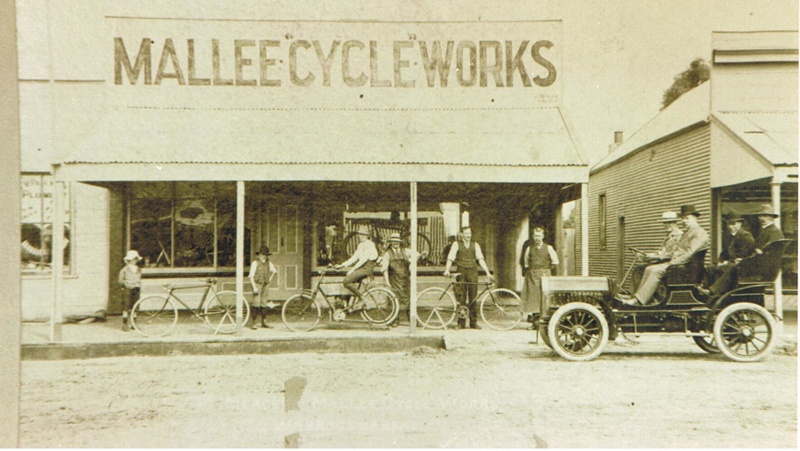 A belt drive bike with a small four stroke engine and pedal assist was built by the Mallee Cycle works in 1905
A belt drive bike with a small four stroke engine and pedal assist was built by the Mallee Cycle works in 1905
-
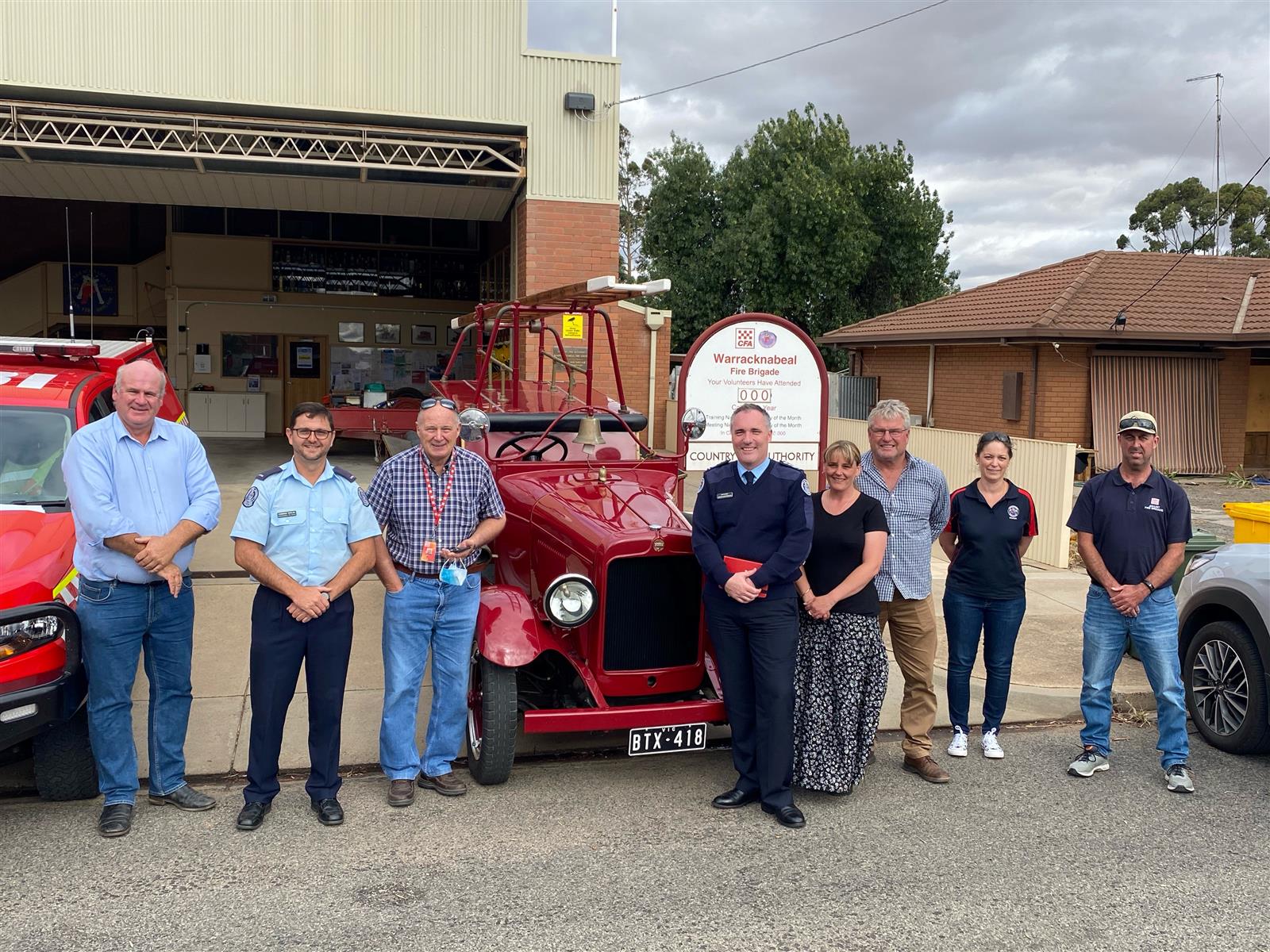 CFA Chief Officer Jason Heffernan with Warracknabeal members
CFA Chief Officer Jason Heffernan with Warracknabeal members
-
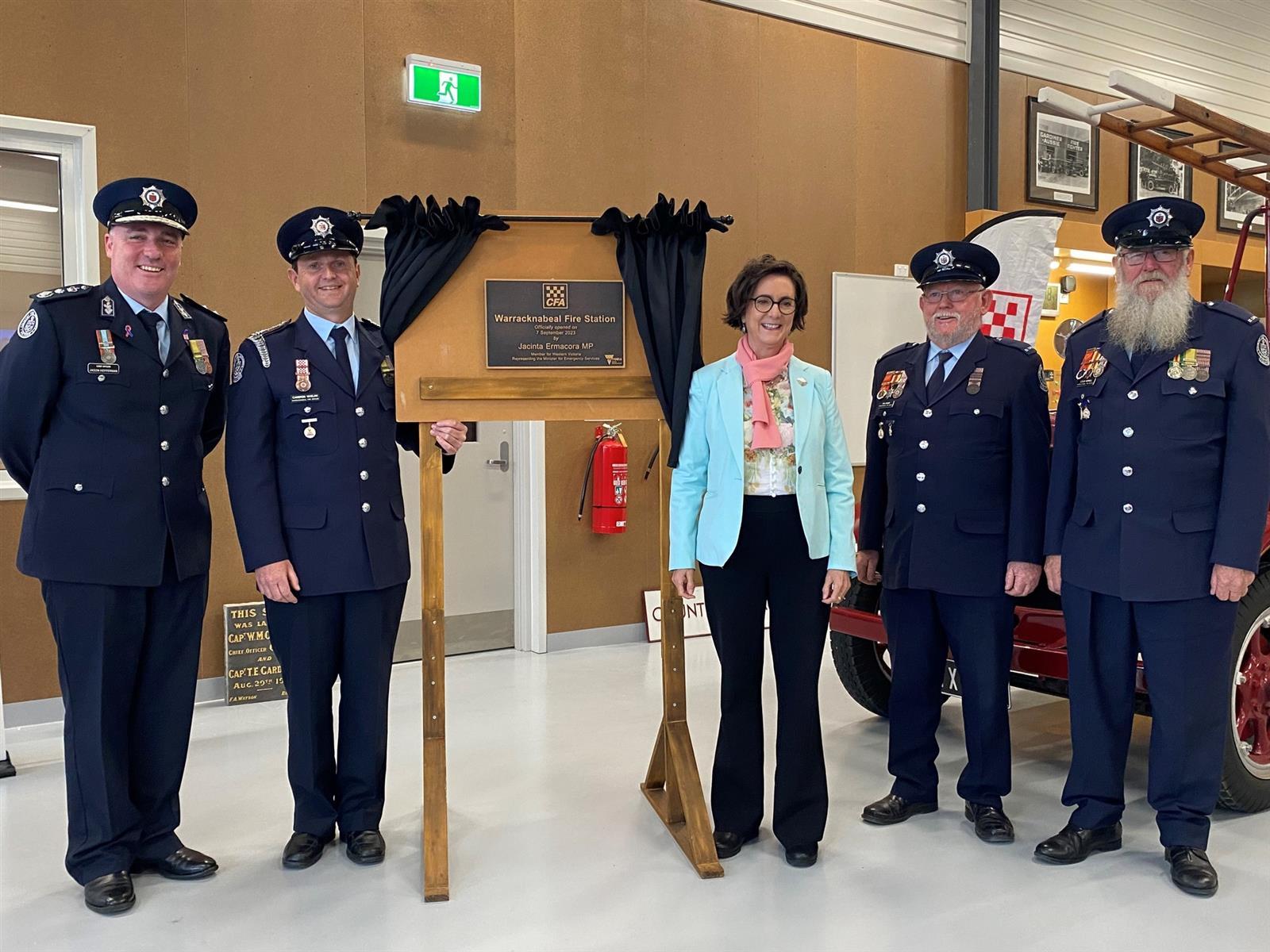 Warracknabeal Fire Brigade members celebrated the official opening of their new station in September 2023
Warracknabeal Fire Brigade members celebrated the official opening of their new station in September 2023
-
 The Warracknabeal Juniors at the State Championships
The Warracknabeal Juniors at the State Championships